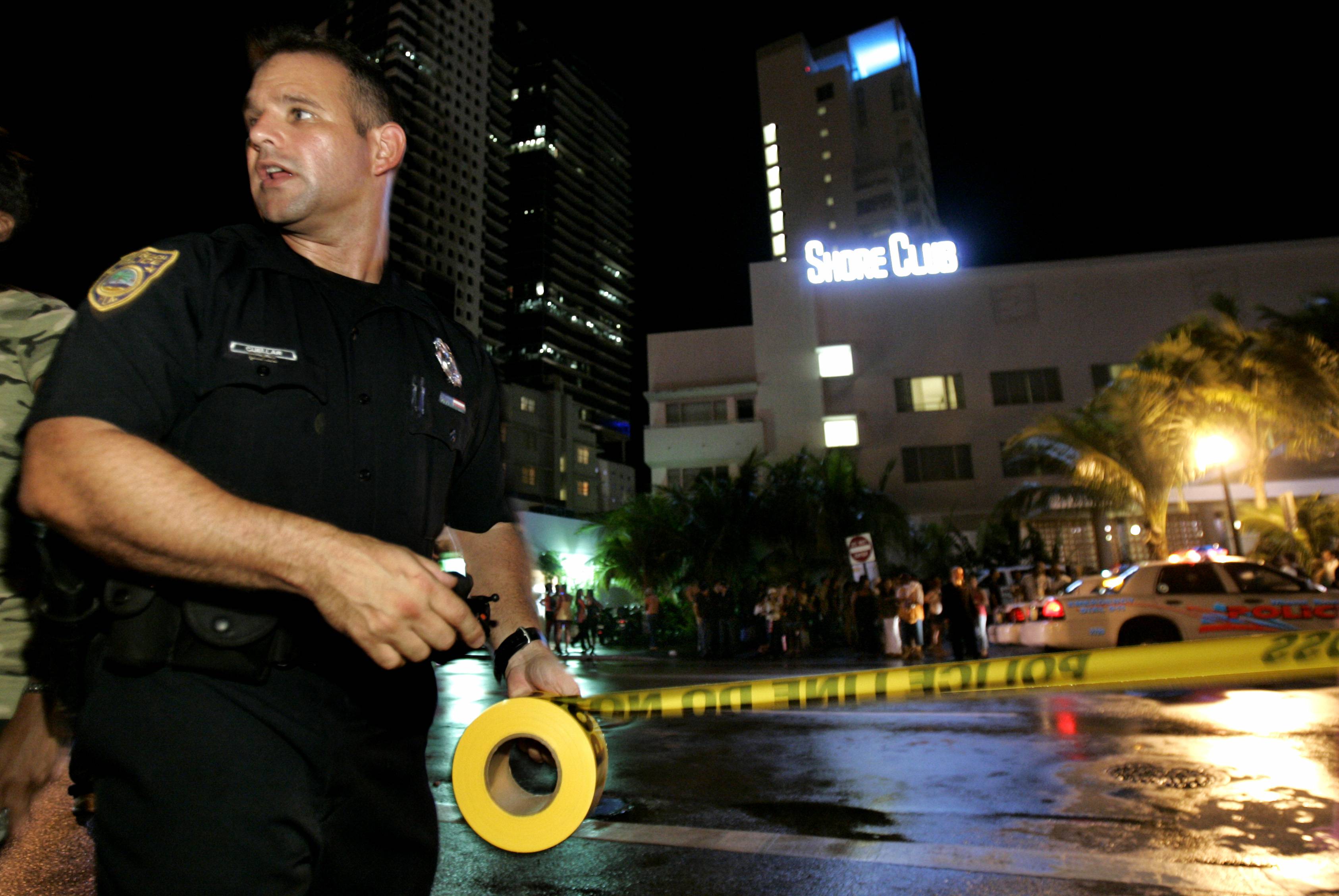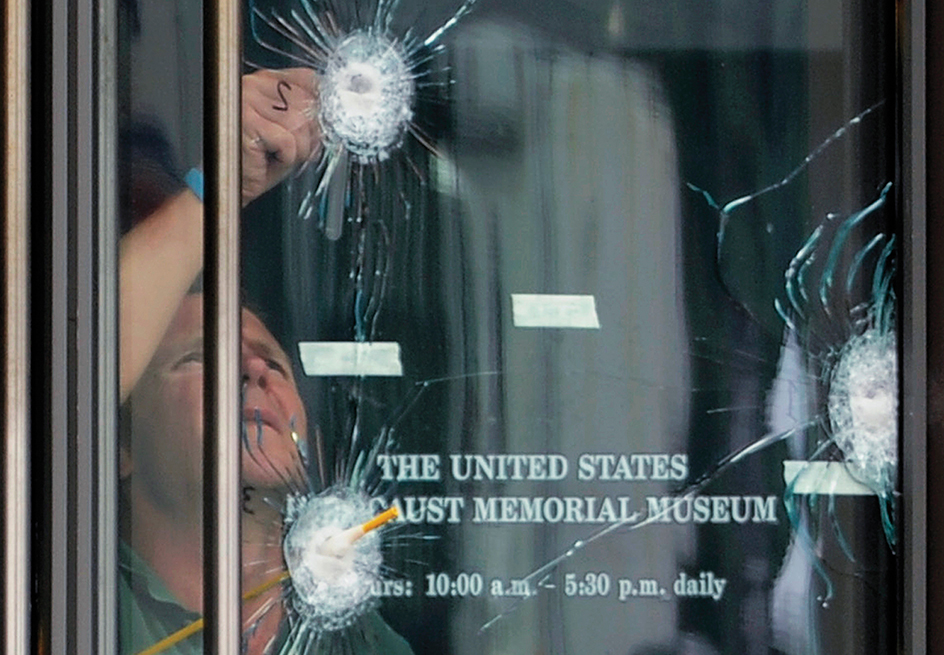Crime scene investigation, often referred to by the initials CSI, is the examination of an area in which a crime happened. CSI includes the collection and analysis of evidence by crime scene investigators, sometimes also called CSI’s. Crime scene investigators are specially trained in handling evidence. Other experts may also be called in to examine a crime scene.

Each crime scene is different. Failure to examine the crime scene properly may harm the investigation. Identifying and convicting the perpetrator—the person responsible for the crime—may then become impossible.
A crime scene might involve more than one location. For example, in a carjacking—that is, the theft of a car by force while the owner is still in it—the primary scene is the site of the theft. But the crime scene could also include other locations, such as where the victim was found, where the stolen car was found, and the suspect’s residence.
Beginning an investigation.
A crime scene investigation follows a planned and orderly process. It begins when law enforcement officers determine that an area may have been the scene of a crime.
When the crime has just happened, the first police officers at the scene, sometimes called the first responders, check for victims. If there are victims, the officers determine whether the victims require medical help. The police officers then make an arrest, if possible. They try to prevent anyone who may have witnessed the crime from leaving the area. Officers also make notes on transient (short term) evidence, such as the weather, lighting, and odors. For example, gasoline has a smell that can linger at a site. First responders attempt to prevent evidence from being lost, destroyed, or contaminated (spoiled by contact).
As soon as possible, police officers secure the crime scene—that is, seal it off—often with a barrier of yellow tape. One person takes charge of the investigation. The officers may set up a command center, a central place where information is gathered and decisions are made.

A CSI unit made up of people specially trained in gathering evidence then begins examining the scene. If there has been a death, a medical examiner or forensic pathologist will take charge of the dead body. A medical examiner or forensic pathologist is a medical doctor with special training in examining the dead. Such an expert conducts an initial examination of the body at the crime scene to give a preliminary estimate of the time of death. This estimate is based upon such factors as the temperature of the body and the extent of rigor mortis. Rigor mortis is the stiffening of the muscles after death. The medical examiner or pathologist works carefully to preserve any evidence that might be on or in the body. A complete autopsy may be performed later.
The CSI unit conducts a preliminary examination of the crime scene. The members of this group initially check for safety hazards. They observe points of entry and exit that the criminal may have used. They determine whether to call on forensic scientists for the collection of any unusual evidence and decide the order in which evidence should be collected. They try to piece together what may have happened at the scene.
The CSI unit takes photographs and videotapes and makes sketches of the entire scene before any detailed search begins. Sketches provide important information about scale and perspective (the relationship of distance between things). Sketches also help locate and identify evidence at the scene.
Collecting evidence.
The most important task of crime scene investigation is the collection and preservation of physical evidence. Physical evidence includes body fluids, documents, drugs, fibers, fingerprints, guns and bullets, hair, paint chips, and soil. It also includes impressions, such as shoeprints and tool marks. Physical evidence can range in size from the microscopic, such as samples of DNA (deoxyribonucleic acid) to objects as large as a building. After the Alfred P. Murrah Federal Building was bombed in Oklahoma City in 1995, the entire building became physical evidence of the crime.
Investigators use a variety of search patterns to examine a crime scene. One common pattern is a grid, which consists of numbered squares drawn on a map of the scene. By referring to this map, the CSI unit can associate the evidence found with a specific area on the grid.
Fingerprints and body fluids are important types of evidence that CSI units search for at a crime scene. Techniques used to spot these types of evidence include special chemicals and high-intensity lights. Traces of blood can remain at a scene for years after a crime. Such stains, even those that are invisible to the naked eye, can be made visible with a chemical called luminol. When sprayed on bloodstains, even those that are several years old, luminol causes them to glow in the dark. Ultraviolet light can make blood and other body fluids visible. Investigators can find fingerprints and improve their quality with powders and glue.

Studying the bloodstain patterns found at the scene of a crime can help investigators interpret what happened. Investigators can often see shoe impressions in dust by means of oblique lighting (lighting from the side). They can save shoeprints made in soil, and even snow, with special casting products. These products can be poured or sprayed into the impression and left to harden. The use of high-intensity lights can make gunshot and explosive residues visible. Residues are the chemicals that remain after a gun has been fired or a bomb has exploded.
CSI teams carefully preserve evidence when they enter a crime scene. They take a number of steps to avoid contaminating the scene and evidence. For example, they wear gloves that prevent them from leaving fingerprints, oils, or sweat from their hands on surfaces. For certain cases, investigators may wear clean suits (plastic coveralls worn over their other clothing). Clean suits are especially needed when investigators must handle tiny trace evidence, such as hair, fibers, or powders.
The CSI unit takes control samples for comparison with evidence from an unknown source. For example, the team takes a sample of a victim’s blood to be compared with blood found elsewhere at the crime scene. Investigators may also collect elimination samples. Such samples are those gathered from people who had lawful access to the crime scene. They include fingerprints from people who lived there or shoeprints from investigators or medical workers who entered the scene.
Sometimes, investigators at a crime scene may require assistance at the site from forensic scientists with special experience in the type of evidence involved. Usually such specialists work at a laboratory. If a lengthy time has elapsed between the victim’s death and the discovery of the corpse, a forensic entomologist may be needed. This specialist studies the insects found with the corpse and determines when the victim died. When only the skeleton of a corpse remains, a forensic anthropologist may be needed to examine and identify the bones. A forensic anthropologist is an expert in human skeletons.
At the laboratory.
There are standard methods for packaging and preserving evidence from a crime scene so that it arrives at the laboratory in good condition. Wet items, such as blood, can suffer from mold and mildew growth. Such evidence must be dried before packaging. Arson (the crime of intentionally setting a fire) often involves the use of a flammable liquid, such as gasoline. Any residue or remaining liquid that is flammable must be packaged in an airtight container to prevent evaporation. Evidence packages are sealed with tamper-evident tape—that is, tape that shows whether someone has tried to remove it—and labeled. After the evidence has been packaged, it is sent to a crime laboratory for analysis by forensic scientists.
A chain of custody is initiated for every piece of evidence recovered from the crime scene to preserve its integrity—that is, to keep it from being damaged. A chain of custody, also called a chain of evidence, is a written record, with signatures and dates, showing who had possession of the evidence at all times. The chain documents who handled the evidence from when it was collected to the time it went to court, and even beyond to storage. Any person who collected, transported, or tested the evidence may be called to testify in court to establish its chain of custody.
Reconstructing the crime.
From the start of the investigation, investigators work to reconstruct the crime. They form a hypothesis, a possible explanation for what has been observed. This hypothesis may include the sequence of events of the crime. It may take into account the motive for the crime. It may also consider the modus operandi (M.O.) of the criminal—that is, the method the criminal used to carry out the crime. Some criminals have characteristic M.O.’s.
At the end of an investigation,
the CSI unit makes a final survey of the scene to review the investigation. After the crime scene has reopened to the public or owner, items collected there may no longer be acceptable as evidence. As a result, investigators must be sure they are completely finished with their work in an area before they reopen it.
